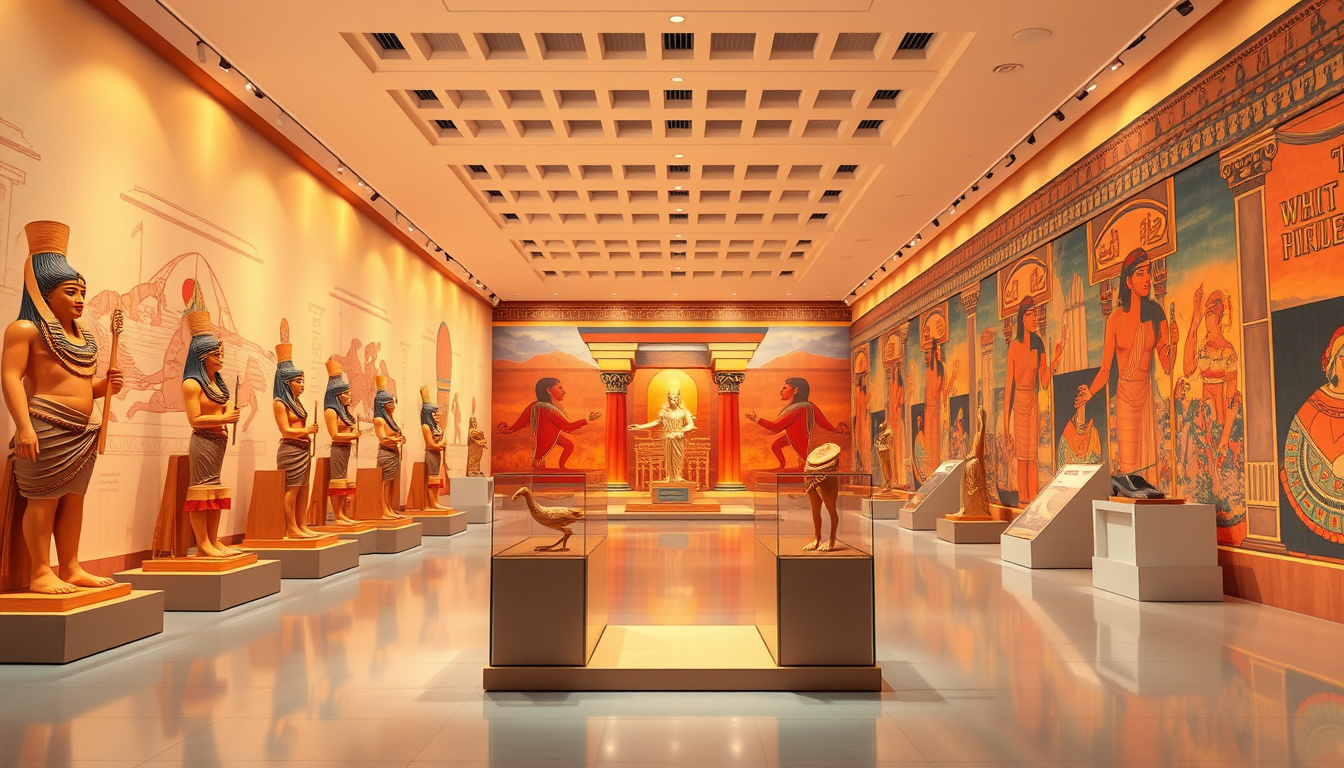The allure of ancient Egypt continues to captivate modern audiences, and the newly launched ‘Divine Egypt’ exhibition at The Metropolitan Museum of Art offers a remarkable window into the spiritual heart of this ancient civilization.
Spanning centuries, the vast collection of nearly 250 artifacts invites visitors to explore the rich tapestry of belief in ancient Egyptian deities, revealing how these divine figures shaped the lives and values of a society long past.
This must-see exhibition, open until January 19, 2026, serves not only as an educational experience but also as a celebration of the artistic and philosophical achievements of a culture that continues to fascinate the world.

Key Takeaways
- The ‘Divine Egypt’ exhibition at The Met features nearly 250 artifacts showcasing ancient Egyptian deities.
- This exhibition highlights the significant roles of gods like Horus, Sekhmet, and Osiris in connecting the human and divine realms.
- Curator Diana Craig Patch emphasizes the philosophical importance of these deities in understanding ancient Egyptian life and culture.
Significance of Deities in Ancient Egyptian Society
The exhibition ‘Divine Egypt’ at The Metropolitan Museum of Art is a captivating exploration of the intricate role deities played in ancient Egyptian society.
Open until January 19, 2026, this landmark exhibition features nearly 250 artifacts, making it the most extensive display of Egyptian gods in over a decade.
The exhibition’s focus on 25 key deities—from revered figures like Horus and Osiris to the fierce goddess Sekhmet—highlights the pantheon’s vastness, which encompasses around 1,500 gods.
Each piece, including a dedicated gallery for the Sun God Ra and the painted relief of Maat, encapsulates the philosophical ideals and daily practices that were informed by these divine beings.
Curator Diana Craig Patch eloquently points out how these deities served as active intermediaries between the human realm and the divine, reflecting the ancient Egyptians’ need to understand their existence and the cosmos.
For those eager to delve into the rich tapestry of ancient Egyptian mythology and its cultural significance, this exhibition promises an enlightening and visually stunning experience.
Highlights and Artifacts of the Divine Egypt Exhibition
The ‘Divine Egypt’ exhibition not only showcases the artistic brilliance of ancient Egyptian artisans but also offers a deep dive into the mythological narratives that shaped everyday life in ancient Egypt.
Through intricate sculptures, beautifully painted reliefs, and poignant inscriptions, visitors can witness how gods like Isis and Anubis were revered not just as distant divine figures, but as integral parts of the social and spiritual fabric of Egyptian society.
Each artifact reveals a layer of complexity regarding rituals, worship practices, and the intertwining of the sacred and mundane.
For instance, the portrayal of the goddess Hathor, known for her association with music and motherhood, illustrates how femininity and fertility were celebrated.
As visitors engage with these artifacts, they are invited to reflect on the ways in which these ancient beliefs resonate with contemporary understandings of spirituality and identity.

